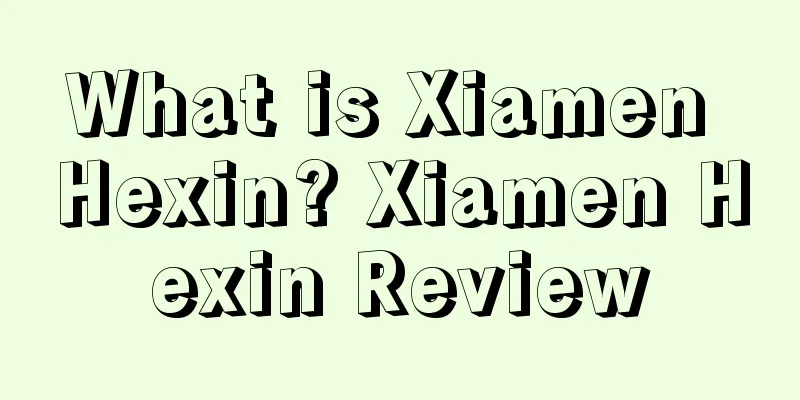|
In 2024, facing the complex and changing international environment, China's foreign trade has delivered a brilliant answer: according to the latest data released by the General Administration of Customs, in 2024, China's total foreign trade import and export value exceeded 43 trillion yuan for the first time , reaching 43.85 trillion yuan, a year-on-year increase of 5%. Among them, the performance of the new business model of cross-border e-commerce is particularly remarkable - the annual import and export scale reached 2.63 trillion yuan, an increase of more than 10% year-on-year , and the proportion of the total import and export volume increased to 6%, becoming the "second curve" to drive foreign trade growth. Behind this set of data, it is a sign that Chinese manufacturing is reshaping the global trade pattern through the digital channel of cross-border e-commerce. And the core engine supporting the growth of this data is precisely China's rich industrial belt resources. According to Yimai's "2024 Cross-border E-commerce Industrial Belt Research Report", China is the country with the largest manufacturing industry in the world, and the overall scale of manufacturing has ranked first in the world for 14 consecutive years. According to incomplete statistics, China has a total of more than 1,100 industrial belts , most of which realize intensive production in the form of physical regional industrial clusters. ▲ The picture comes from Yimai's "2024 Cross-border E-commerce Industry Belt Research Report" From small commodities in Yiwu, Zhejiang to electronic products in Shenzhen, Guangdong, from shoes and clothing in Quanzhou, Fujian to auto parts in Changzhou, Jiangsu, these regionalized, specialized and large-scale industrial belts have broken the geographical and time limitations of traditional trade through cross-border e-commerce, and have brought cost-effective products and services to the international market, forming an efficient growth chain of "industrial belt-cross-border e-commerce platform-international market" . ▲ Scan the QR code to get the complete industry belt analysis report When analyzing the overseas expansion of my country's cross-border sellers and even cross-border e-commerce platforms, many industry insiders will find that there are "industrial belts" hidden behind them. The most representative of them are the "Four Little Dragons of China's Overseas Expansion". In recent years, Temu, SHEIN, AliExpress and TikTok Shop have successively entered multiple industrial belts across the country to recruit sellers, and set off a wave of traditional industrial belt factories entering cross-border e-commerce with a fully managed model. Later, Temu and others successively launched a semi-managed model, while retaining the flexibility of the industrial belt, lowering the threshold through platform empowerment, forming a value closed loop of "platform-industrial belt-consumer" . With the advantages of characteristic industrial belts and the "eliminating middlemen" strategy of cross-border e-commerce platforms, China's highly cost-effective products are able to "soar" overseas. Until 2025, industrial belt sellers will still be the focus of recruitment by these cross-border e-commerce platforms. Recently, AliExpress launched a new round of national investment promotion plan for 2025, focusing on recruiting new merchants in industrial belt-intensive areas such as Zhejiang, Guangdong, and Fujian. TikTok Shop also officially launched the "Industrial Belt Premium 100+" fully managed investment promotion and business partner recruitment plan. In addition, many cross-border sales of different categories have also emerged in key industrial belts across the country. In Menghe Town, Changzhou, Jiangsu, there are more than 4,000 auto parts manufacturers, with products covering more than 5,000 varieties. The story of Lingyue Equipment, a big seller of auto parts, began here. After gaining a foothold in China, Lingyue Equipment turned its attention to overseas markets. Since 2015, it has sold its products to the United States, opened up sales channels such as eBay and Amazon, and now more than 90% of its orders come from cross-border e-commerce platforms. Zhejiang Yongkang Hardware Industry Belt gathers 45,000 manufacturing enterprises, forming an integrated industrial cluster of "production-R&D-sales". Relying on the advantages of this industrial belt, the kitchenware seller Carrot has cooperated with multiple cross-border e-commerce platforms such as Amazon and Lazada, becoming one of the fastest growing kitchenware brands in the world, and successfully listed in Hong Kong in October 2024. Overall, these cases confirm that China's industrial belts are empowering cross-border e-commerce through three core capabilities, namely supply chain collaboration, cost control, and data-driven innovation , thus becoming the core competitiveness of China's overseas companies. Standing at the historical node where the total foreign trade volume has exceeded 43 trillion yuan, the story of China's manufacturing going overseas is opening a new chapter. It should be noted that "cross-border e-commerce + industrial belt" is not a simple channel superposition. It not only concerns the efficiency of enterprises going overseas, but also an industrial revolution from "OEM" to "brand going overseas" and from "scale expansion" to "value leap" . In an international environment full of uncertainty, with the help of the "cross-border e-commerce + industrial belt" model, overseas companies can more effectively utilize and allocate industrial belt resources, open up global direct channels between the production and consumption ends, and thus shift from cost advantages to comprehensive advantages in technology, brand, and ecology, and achieve a historic leap from "Made in China" to "Made in China" . At present, the "cross-border e-commerce + hardware tools industry belt" represented by Giant Star Technology and the "cross-border e-commerce + 3C electronics industry belt" represented by Anker Innovations have set up learning benchmarks for overseas companies in the overseas market. In 2025, cross-border enterprises that are deeply rooted in the industrial belts, which have both deep supply chain foundations and agile posture in the digital age, will undoubtedly have a better chance of writing a "new navigation legend" of Made in China in the global market. The "2024 Cross-border E-commerce Industrial Belt Research Report - Focusing on Industrial Belts, the New Growth Engine of Cross-border E-commerce" released by Yimai Cross-border Ecological Platform pointed out that driven by global economic integration and the development of digital technology, cross-border e-commerce has become a new engine of economic growth and its integration with industrial belts is becoming increasingly close. The report deeply analyzes the industrial belts of potential categories such as automotive accessories, home gardening, beauty and personal care, sports and outdoor , and analyzes their market size, development status, industrial cluster distribution and future trends. Taking the auto parts industry belt that has been "hot" in recent years as an example, the report points out that China's auto industry has formed six industrial clusters, mainly in the Yangtze River Delta, Pearl River Delta, Beijing-Tianjin-Hebei, Central Triangle, Chengdu-Chongqing, and Northeast China. The output value of parts in these six industrial clusters accounts for about 80% of the entire industry. The six major auto groups, including FAW Group, Dongfeng Group, Changan Automobile Group, SAIC Group, GAC Group, and BAIC Group, are distributed in these industrial clusters. ▲ The picture comes from Yimai's "2024 Cross-border E-commerce Industry Belt Research Report" At the same time, the report also explains how the industrial belt empowers cross-border e-commerce through models such as integrated production, research and sales, front-store and back-factory, and integrated industrial chains , thereby improving its market competitiveness and supply chain efficiency and promoting product innovation and market expansion; cross-border e-commerce also relies on digital upgrades, improved logistics fulfillment, and product innovation to drive international market expansion to help the transformation and upgrading of the industrial belt. Many successful cases have demonstrated the remarkable results of the coordinated development of the two. Taking the beauty and personal care products that are growing rapidly on platforms such as TikTok Shop and Amazon as an example, the report integrates the potential category analysis and the results achieved in multiple industrial belts in Zhejiang, including Jinhua City, Yiwu, Hangzhou and Huzhou. ▲ The picture comes from Yimai's "2024 Cross-border E-commerce Industry Belt Research Report" In addition, the country has introduced a number of policies, and e-commerce platforms have launched industrial belt plans to provide support for the development of industrial belts. Yimai cross-border ecological platform is also committed to building a transaction bridge for cross-border sellers and industrial belt suppliers to promote the export of Chinese products. To obtain the complete industry belt analysis report, please scan the QR code below It is foreseeable that in the future of deep digitalization and globalization, the "cross-border e-commerce + industrial belt" model will continue to innovate, more excellent domestic industrial belt resources will be tapped, and through the cross-border e-commerce trade method, Chinese smart manufacturing will be famous all over the world, gradually realizing the real industrial belt brand going overseas.
|










